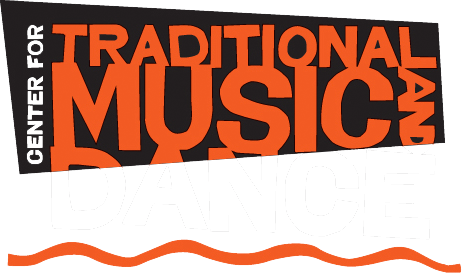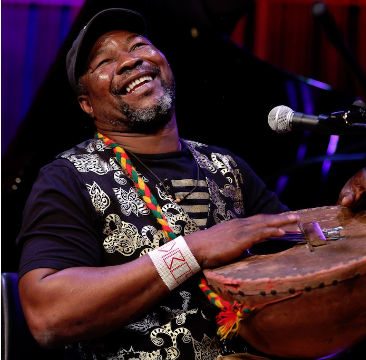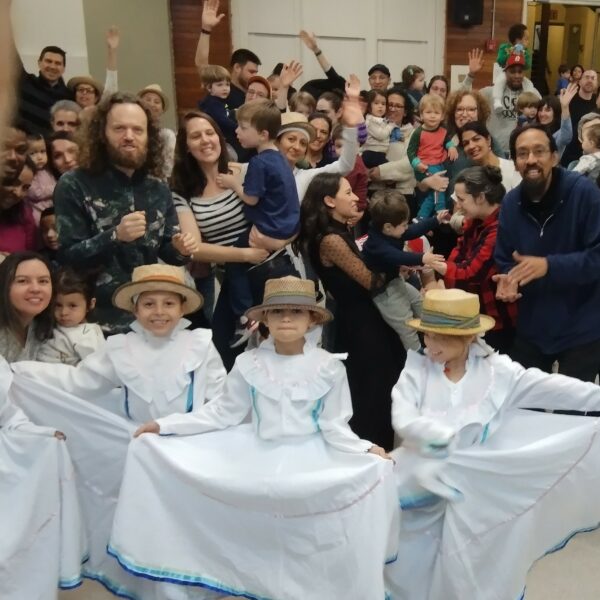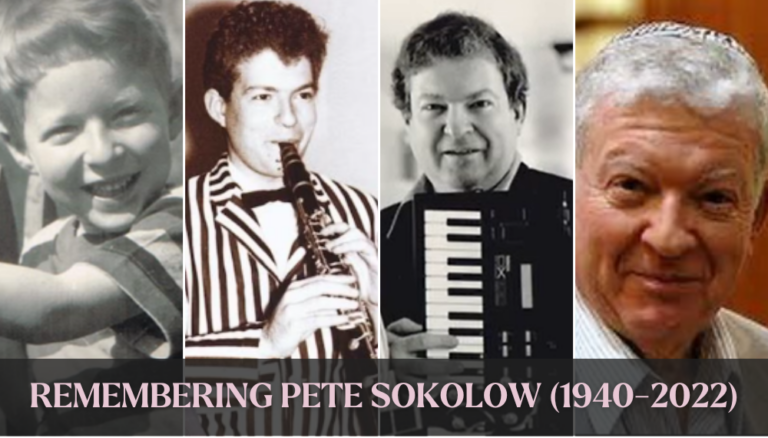Over our forty year history, CTMD has had the good fortune to work closely with a number of National Heritage Fellowship Award winners. Each year, the National Endowment for the Arts selects ten to thirteen individuals (occasionally ensembles) to receive Fellowships—our national government’s highest recognition for excellence in folk and traditional arts.
This year, we were ecstatic to hear that Korean dancer Sue Yeon Park was selected for this prestigious award. A long-time friend of CTMD, Park is President and Founder of the Korean Traditional Performing Arts Association (KTPAA), which works to preserve and present traditional Korean performing arts in America. She also is the leader of the CTMD Touring Artists ensemble Sounds of Korea.
She is the only American designated as a yisuja by the Korean government, a designation of highest-level mastery in traditional arts, which Park received for her specialization in salpuri-chum, the ritual dance of shamans. Park also is recognized as a jeonsuja-level practitioner (the penultimate designation) of the Buddhist ritual drum dance, seungmu.
Elegant, charismatic, and imbued with a deep commitment to traditional arts, Park stopped by our office this week and, with the help of ethnomusicologist and KTPAA Executive Director, Dr. Ju-Yong Ha, Ethel Raim and I got to learn more about the roots of her artistry.
The Dance of the Shaman
Sue Yeon Park was born in 1954 on Kanghwa, an island in the Yellow Sea near the mouth of the Han River which flows westward from the South Korean capital, Seoul. The youngest of four children, her father, Seung Yoo Park, owned a large textile factory which her mother, Tae Ok Song, helped manage. The family later moved to Seoul when Park was only four years old.
The family was very involved with shamanistic Buddhism. Each year, Park’s paternal grandmother would host a mudang (shaman) to perform an elaborate two-to-three day gut (rhymes with “foot”) ritual. In later years, Park’s mother would take over hosting the annual gut from her mother-in-law.
Like clergy of other traditions, Korean mudang(s), who are most often women but can be of either gender, provide counseling as well as ritual performance. Additionally, the gut serves as a source of entertainment for the entire community. In the Seoul region, the local manifestation of the gut ceremony always includes a dinner banquet followed by music and dancing.
The mudang’s singing and dance forms an integral part of the ritual, and they usually travel to a gut with a retinue of three or four musicians, known as “akgong,” who are typically members of the shaman’s family. Typical instrumentation includes piri (oboe), jing (gong), bara (cymbals), daegum (flute), haegum (fiddle) and janggo (hour-glass shaped drum).
From an early age, Park was obsessed by the shaman’s dance. She remembers skipping school to attend a gut at the sound of an akgong ensemble or the mudang’s singing. At age eleven, Park became so transfixed during a post-banquet dance, that she grabbed the mudang’s janggo and started dancing with it. The mudang prophesized to Park’s mother that the young girl was destined to become either a kangshin mudang (a mudang who “receives” the spirits despite no hereditary ties to the profession) or a professional dancer.
Learning the Tradition
Park’s artistic influences can be traced to the artistic centers in Korea in the early 20th century during the Japanese colonial period. Schools known as kwonbon were important institutions where many of Korea’s performing and artistic traditions were preserved and taught. Students there had the opportunity to learn the artistry of the mudang as well as the repertory of the kisaeng, the traditional female performers who served the Korean aristocracy during the 19th century.
According to Ju-Yong Ha, kisaeng culture was founded in the 14th century under the Joseon Dynasty. The Joseon were a Confucian aristocracy which ruled Korea for centuries until the Japanese annexation of the peninsula in 1910. The kisaeng would perform exclusively for the male aristocrats, known as yangban. Though the kisaeng were considered the lowest status group in Korea, they had to be very well educated and talented to entertain the yangban.
Traditional kisaeng culture was destroyed under the Japanese occupation. The occupiers used the kisaeng as prostitutes, which was never the role of the traditional kisaeng. Even after the emancipation from Japan in 1945, the profession collapsed, stigmatized by the occupation and missing the aristocratic patronage that had sustained it.
Though the world of the kisaeng was no more, elements of kisaeng performance have been preserved since the occupation through a movement to institutionalize its pedagogy in kwonbon schools. Kwonbon also employ mudang shamans and akgong musicians to teach students arts associated with the gut ritual.
Encouraged by her parents at age six, Park studied dance through after-school classes three times a week at Jung Ja Lee’s dance school. At age thirteen, she transferred into the kwonbon run by Bum Song, a famous dancer whose academy taught ballet and modern dance in addition to the traditional Korean forms that Park studied.
Park’s talents and gregarious nature made it possible for her to attract enough of her own students to open up a private dance studio at age nineteen. She maintained the studio in Seoul while commuting to performances as danjang (leader) of a dance troupe at the Korea House, a venue popular with Japanese businessmen located in the Olympus Hotel of the port city of Incheon.
At age 25, Park and her friend Chun Saeng Rhe joined a touring flamenco dance troupe to provide interludes of traditional Korean dance. At the end of a 1981 tour to Spain, Canada and New York, Park and Rhe decided not to leave the U.S., and began the process of immigration.
Park soon engaged herself in the cultural life of the Korean immigrant community in New York. She became active in the Tongil (Unification) Farmer’s Percussion Ensemble (Korean percussion music is traditionally associated with the rituals of the farm and harvest). She worked with the Korean Times newspaper to develop the music and dance elements of the annual Korean parade, and began performing traditional dance and music in the annual Chusok Harvest Festival in Flushing Meadow Park.
Inspired by a Legend
Park’s involvement with another New York-based group, the Association for Korean Performing Arts, saw her organize a concert at Queen’s College featuring the legendary pansori (folk opera) singer So Hee Kim, designated by the Korean government as a “National Living Human Treasure,” then seventy-five years old.
Though So Hee Kim was not a dancer, Park says the experience of performing with Kim changed her life. Master Kim was then serving on the Board of Directors of Hanguk Gukak Heop Heo– the Korean Traditional Music Association. Kim became a mentor to Park and suggested that she start a branch of the organization in New York, which Park established in 1993 as the Korean Traditional Performing Arts Association (KTPAA).
Kim further inspired Park to continue her study of traditional dance. She began to regularly return to Korea for two to three weeks at a time to study salpuri-chum (the shaman’s dance) with You Lim Jin, a renowned female dancer. In 1997, Jin referred Park to her own teacher, Yi Mae-bang, who was recognized as the leading master of the form.
Serving the Community
Park continued to study with Mae-bang until she herself was honored by the South Korean government with the title of yisujafor salpuri-chum in 2003. She continues to study the seungmu Buddhist drum dance under another master, Chang-bae Yi, and has obtained the penultimate designation of jeonsuja in this discipline.
In addition to the recent NEA honor, Park has received many awards for her service to the Korean-American community. She received the New York Governor’s Award of Excellence in 2004 and has been recognized with similar honors by groups such as the Korean-based Foundation for Korean Arts and Culture.
Under Park’s leadership as well as that of Ju-Yong Ha, KTPAA has become a model institution in New York for cultural preservation. KTPAA features a dance troupe, an instrumental chamber ensemble and a percussion ensemble. Many of Park’s students are second and third-generation Korean-Americans who have become professional performers themselves. The Association’s touring group, Sounds of Korea, performs at leading venues throughout North America.
For more information about KTPAA, go to their website.
For more information about booking performances of the Sounds of Korea ensemble, CTMD Touring Artists page.




